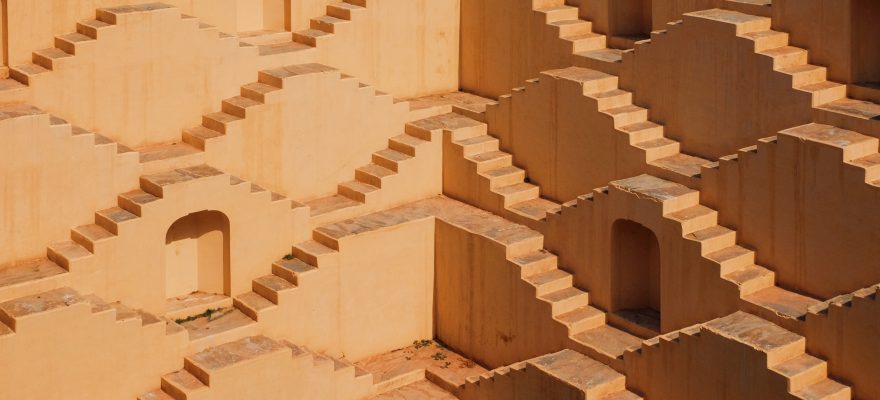February 19, 2018. The palaces inside Amer Fort are composed of four different complexes with their own enclosures. The first one features a large plaza where troops celebrated their victories on their return from battle by parades in front of the royal family.

Once you enter the first palace, you’d be greeted by a beautiful garden courtyard magnificently manicured to reflect perfect geometries.


Further inside the fort, you’d get lost in a maze of different edifices and hallways, each bearing witness to the histories of the Rajput royals who used the fort as their palace. Notice the photo below of one of the honeycomb windows that are common architectural features of buildings of their era. The women of the royal court are forbidden to be seen in public and only have the right to look at the outside world through latticed windows.
(I visited the fort without any tour guide so I will not pretend to tell you all about the different facts surrounding the fort’s features.)




After spending a few hours in the fort, I headed down a not-so-beaten path to see another geometric and architectural construction–the Pana Meena Ka Kund stepwell. Stepwells were common infrastructures all across northern India. As their names suggest, they were constructed for the main purpose of water storage, but they also worked as air conditioning systems in palaces and forts.






